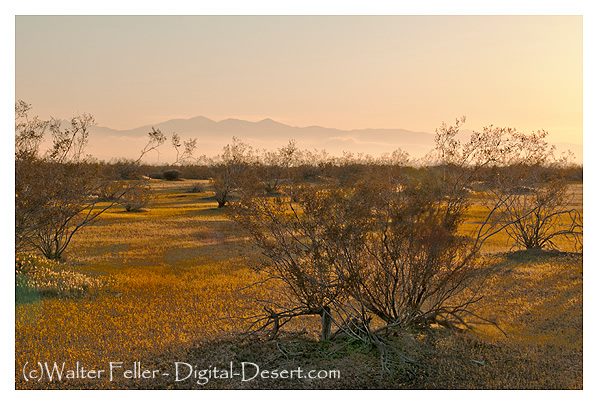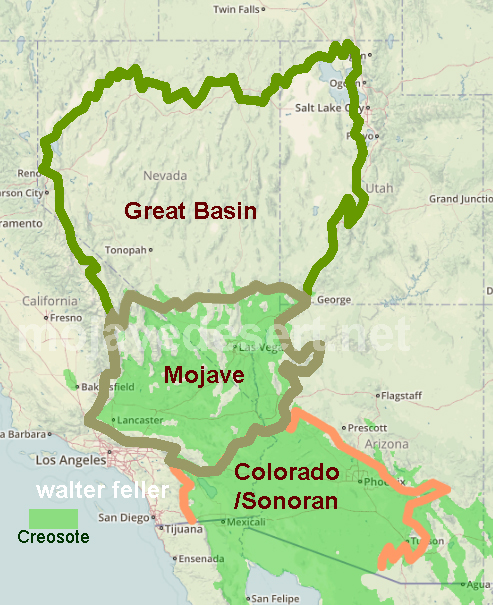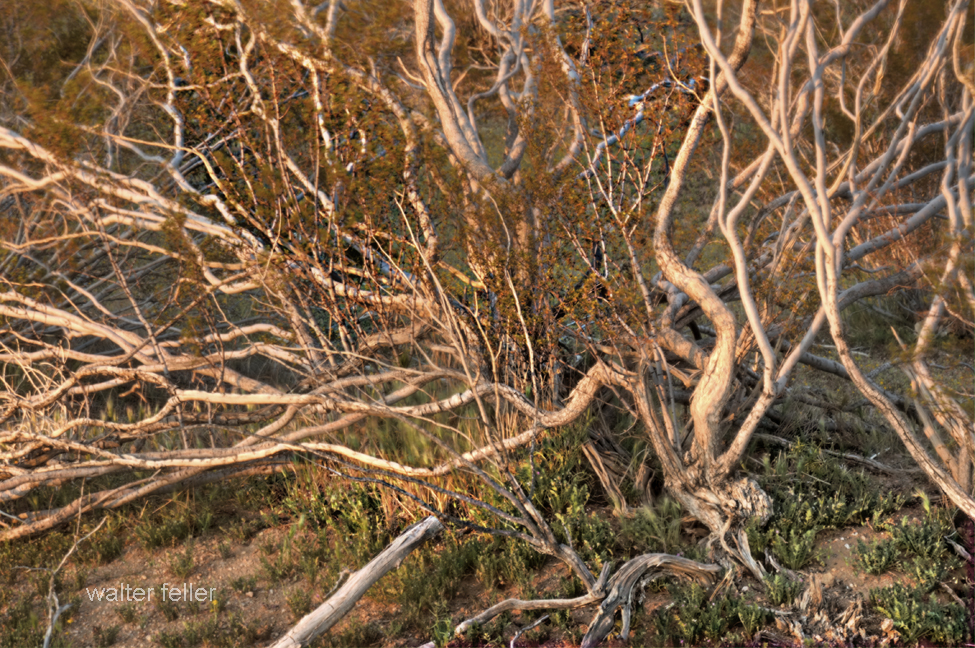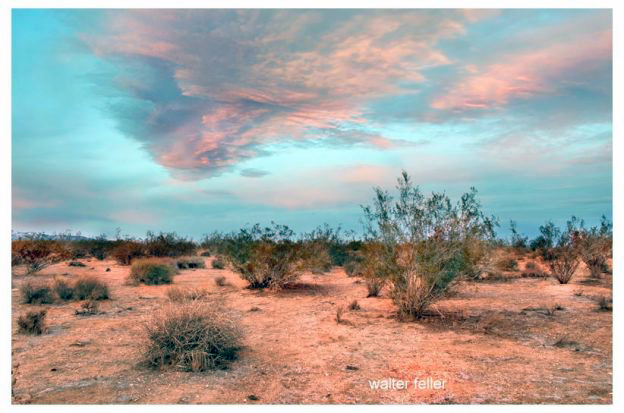Introduction

The desert creosote bush (Larrea tridentata) is a remarkable plant native to the arid regions of North America and is known for its resilience and adaptability. One of the most intriguing aspects of this plant is its allelopathic properties. Allelopathy refers to the biochemical interactions between plants, where one plant releases chemicals that can inhibit neighboring plants’ growth, survival, and reproduction. This essay explores the allelopathic properties of the creosote bush, examining its chemical mechanisms, ecological impacts, and potential applications.
Overview of the Creosote Bush

The creosote bush dominates in the southwestern United States and northern Mexico deserts. It thrives in extreme conditions characterized by high temperatures, low rainfall, and poor soil quality. The plant is well-adapted to these harsh environments, with small, waxy leaves to minimize water loss and an extensive root system to maximize water uptake. Beyond its physical adaptations, the creosote bush employs chemical strategies to maintain its dominance in the desert ecosystem.
Chemical Mechanisms of Allelopathy
The allelopathic properties of the creosote bush are primarily attributed to the secondary metabolites it produces. These compounds include phenolic acids, flavonoids, and lignins, which are released into the soil and air through various plant parts such as leaves, roots, and stems. Among these, phenolic compounds like nordihydroguaiaretic acid (NDGA) play a crucial role.

NDGA is a potent antioxidant and a significant allelopathic agent. It inhibits competing plants’ seed germination and root growth by disrupting cellular respiration and photosynthesis. Studies have shown that soils beneath creosote bushes have higher concentrations of NDGA, leading to reduced germination rates and stunted growth of other plant species. This chemical warfare allows the creosote bush to secure essential resources such as water and nutrients by minimizing competition.
Ecological Impacts
The allelopathic properties of the creosote bush have significant ecological implications. By suppressing the growth of other plants, the creosote bush creates a unique microhabitat that influences plant diversity and distribution in desert ecosystems. This phenomenon leads to a mosaic of vegetation patterns, where patches dominated by creosote bushes are interspersed with bare soil or sparse vegetation.
The reduced plant diversity around creosote bushes can impact other trophic levels, including herbivores and predators. For instance, herbivorous insects and small mammals that rely on various plant species for food may find fewer resources in areas dominated by creosote bushes. Consequently, the allelopathic effects of the creosote bush can influence the distribution and abundance of these animals.
Additionally, the altered plant community structure can affect soil properties. The reduced litter input from other plant species may lead to lower organic matter content and changes in soil microbial communities. These changes can further reinforce the creosote bush’s dominance, creating a feedback loop that maintains its competitive edge.
Potential Applications
Understanding the allelopathic properties of the creosote bush has practical applications in agriculture and weed management. The compounds responsible for allelopathy, such as NDGA, could be explored as natural herbicides. These bioherbicides offer an environmentally friendly alternative to synthetic chemicals, potentially reducing the ecological footprint of agricultural practices.
Furthermore, studying allelopathy in the creosote bush can inform sustainable land management strategies in arid regions. By recognizing the impacts of allelopathic plants on ecosystem dynamics, land managers can make informed decisions to promote biodiversity and maintain ecological balance. For example, controlling the spread of creosote bushes in areas where they threaten native plant communities could help preserve biodiversity.
Challenges and Future Research
While the creosote bush’s allelopathic properties offer exciting possibilities, there are challenges to consider. The complexity of natural ecosystems means that the effects of allelopathy are not always straightforward. Factors such as soil type, climate, and interactions with other organisms can influence the outcome of allelopathic interactions. Therefore, comprehensive field studies are essential to fully understanding the ecological impacts of allelopathy in diverse settings.

Future research should also explore allelopathy’s genetic and molecular basis in the creosote bush. Identifying the genes and regulatory pathways involved in the production of allelopathic compounds could provide insights into the evolutionary origins of this trait and its potential for manipulation. Additionally, investigating the interactions between allelopathic compounds and soil microorganisms could reveal new aspects of plant-microbe interactions and their role in shaping plant communities.
Conclusion

The allelopathic properties of the desert creosote bush highlight the intricate and dynamic nature of plant interactions in arid ecosystems. The creosote bush significantly influences plant community structure, soil properties, and overall ecosystem dynamics by producing secondary metabolites. While challenges remain in fully understanding and harnessing these properties, the potential applications in agriculture and land management are promising. Continued research into the allelopathic mechanisms of the creosote bush will advance our ecological knowledge and contribute to the development of sustainable practices in managing natural and agricultural systems.
